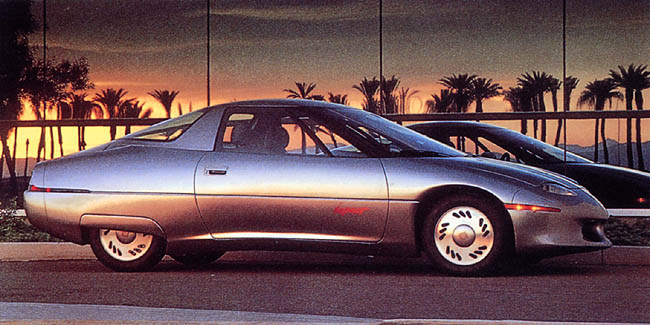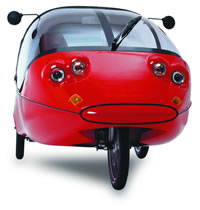
With our stock market faltering, our investment firms sinking, involvement in frustratingly unproductive conflicts, and our entire southern region battered by hurricanes, America seems to have a lot more to worry about than our environment. What many don’t realize is that all of these issues can be tied to America’s insistence that energy sustainability has little more purpose than appeasing tree huggers. Investing in clean, cheap, renewable electric energy is imperative in situating America on the top of the impending energy revolution. America will continue its downward spiral if we continue to adhere to our wasteful, dirty, traditional methods of energy production.
I happened to be watching the Daily Show with Jon Stewart on September 23rd, 2008 when he had President Bill Clinton on the show. Clinton explained the importance of renewable energy so precisely I had to find his exact words again:
Bill Clinton- If you remember, in my second term, we had lots of jobs in part because all these high tech industries were booming. So like every boom, it led to a downturn. When the downturn occurred, the federal reserve left a lot of money in America, but the only thing that was then making money was housing…. In 2001, all this money was out there; and it all went into houses and construction. So we had to keep finding funny ways to have more houses, like, the sub prime mortgages or the derivatives. What if we had put a lot of this money into solar, and wind energy, and hybrid electric vehicles, and all these things that are making all of our cities as energy efficient as possible? We would have created millions of jobs, raised incomes, had the revenues to provide healthcare to everybody, and there would have been competition for investment.”
[Cheers and applause from the crowd]
Jon Stewart- If we had the presidential election today, what do you think you’d win by? 20? …. You would pretty much crush them.
There are three ways of succeeding in the business world: you have to be the first, the best, or the cheapest. America has the opportunity to succeed in energy sustainability the same way it has in many other industries. Some pundits say the any efforts by the US to slow global warming won’t matter because China and other developing countries are creating more pollution than ever. Well advancing clean energy is more than being green, it is about setting ourselves up in a leading role in developing technology that allows us to live cheaper and more efficiently, that will someday be utilized by everyone.
Masdar City:

Take, for example, the United Arab Emirates and the Masdar initiative. In this initiative, the UAE has begun building cities that rely entirely on clean transit and renewable means of energy production. More can be read about it here. Now, why would a world leader in hydrocarbon production be investing in renewable energy that, if widely used, would hurt their chief export? Well, for one, they know that their chief export is finite and will run out some time in the future. Instead of spending their cash flow on more consumable fossil fuels, they are investing in cheap, renewable energy that will power their cities when the oil, and most of their income runs dry.
This trend of Middle Eastern countries, rich off of our addiction to oil, and making wise investments is not mitigating our current financial crisis. The weak dollar has led to an influx of foreign investors buying up our assets. Middle eastern firms are buying our most prestigious US landmarks, such as the Chrysler Building in NYC.
“We are buying in the U.S. … Somebody’s problem is somebody’s profit. Something you want to buy, you can buy cheaper now,” Sultan Ahmed bin Sulayem (Reuters)
New York City:
 Government and corporate greed supported America’s addiction to oil and derailed the alternatives long enough to run our economy into the ground, all this while endowing Middle Eastern countries with the resources necessary to buy our biggest assets and make it a world leader in clean, renewable energy. Last week, we just passed a spending bill to open up offshore drilling and bail out faltering US auto companies, GM and Ford, whom have, so far, shown absolutely no understanding of hybrid electric vehicles, what consumers want. The most prominent renewable energy manufacturers are coming from Europe. A Danish company, Vestas is the world leader in designing and manufacturing wind turbines. A Scottish company, Pelamis, is developing the world’s wave energy converters. If we do not restructure how we develop energy, we will be stuck in the 20th century with our “clean” coal and offshore drilling that will give us more oil 30 years down the road, by then it should be a worthless commodity; while the rest of the world develops into clean, efficient, renewable, and cheap energy producers. Our current economy, and our persistence in traditional means of energy production could cause America to be left behind, never crawling out of the hole we have dug.
Government and corporate greed supported America’s addiction to oil and derailed the alternatives long enough to run our economy into the ground, all this while endowing Middle Eastern countries with the resources necessary to buy our biggest assets and make it a world leader in clean, renewable energy. Last week, we just passed a spending bill to open up offshore drilling and bail out faltering US auto companies, GM and Ford, whom have, so far, shown absolutely no understanding of hybrid electric vehicles, what consumers want. The most prominent renewable energy manufacturers are coming from Europe. A Danish company, Vestas is the world leader in designing and manufacturing wind turbines. A Scottish company, Pelamis, is developing the world’s wave energy converters. If we do not restructure how we develop energy, we will be stuck in the 20th century with our “clean” coal and offshore drilling that will give us more oil 30 years down the road, by then it should be a worthless commodity; while the rest of the world develops into clean, efficient, renewable, and cheap energy producers. Our current economy, and our persistence in traditional means of energy production could cause America to be left behind, never crawling out of the hole we have dug.




 Government and corporate greed supported America’s addiction to oil and derailed the alternatives long enough to run our economy into the ground, all this while endowing Middle Eastern countries with the resources necessary to buy our biggest assets and make it a world leader in clean, renewable energy.
Government and corporate greed supported America’s addiction to oil and derailed the alternatives long enough to run our economy into the ground, all this while endowing Middle Eastern countries with the resources necessary to buy our biggest assets and make it a world leader in clean, renewable energy. 



